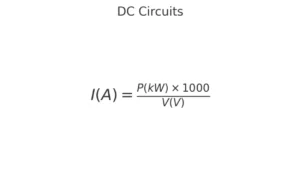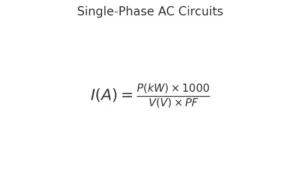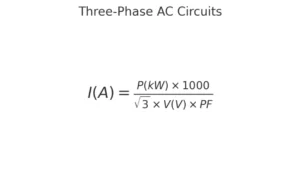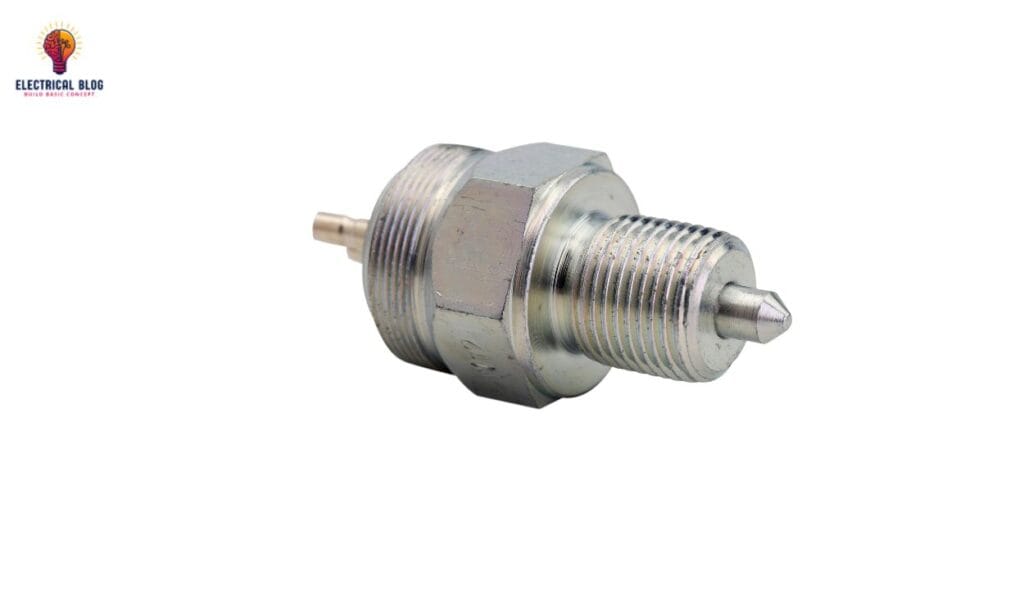Introduction
Understanding the conversion from kilowatts (kW) to amperes (A) is essential in electrical engineering and system design. This calculation is crucial for determining current flow, selecting appropriate wiring, and ensuring safe electrical operations. Various professionals, including electricians, engineers, and students, frequently use a kW to Amps calculator to simplify these computations. Accurately converting kW to A ensures that electrical systems function efficiently and safely, preventing equipment damage and electrical hazards. In this article, we will explore step by step how to calculate kw to amps.
What is the kW to amp conversion?
Kilowatts (kW) measure power, while amperes (A) measure electric current. The relationship between these units depends on voltage (V) and circuit type. Different formulas apply for direct current (DC) and alternating current (AC) circuits:
DC Circuits: The calculation is straightforward, as power equals voltage multiplied by current.
AC Circuits: The presence of the power factor complicates the conversion, requiring additional considerations.
kW to Amps Calculator
Single Phase: Amps = (kW × 1000) / (V × PF)
Three Phase: Amps = (kW × 1000) / (V × PF × √3) where √3 ≈ 1.732
How to calculate kw to amps?
The conversion formulas vary based on the circuit type:
DC Circuits:

Single-Phase AC Circuits:

Three-Phase AC Circuits:

where:
P = Power in kilowatts
V = Voltage in volts
PF = Power factor (typically between 0 and 1 for AC circuits)
Step-by-Step Calculation Example
Example 1: DC Circuit
Given: 5 kW power, 200V DC supply I = 5×1000/200= 25 A
Example 2: Single-Phase AC Circuit
Given: 5 kW power, 230V supply, 0.9 power factor I = 5×1000/230×0.9 = 24.15 A
Online kW to Amps Calculator: How It Works
An online calculator simplifies the conversion process by automatically applying the correct formula based on the provided inputs. Features include:
Selection of DC or AC circuit types.
Power factor adjustments
Quick and error-free calculations
User-friendly interface for quick results.
Factors Affecting kW to Amps Conversion
Voltage Variations: Voltage fluctuations impact current calculations, leading to potential inaccuracies in system design.
Power Factor in AC Circuits: Affects efficiency and amperage, making it a crucial factor in AC power systems.
Efficiency considerations: Real-world losses, such as resistance and temperature fluctuations, must be factored into practical applications to ensure reliable calculations.
Load Type: Resistive, inductive, and capacitive loads impact current flow differently, altering the required amperage.
Environmental Conditions: High temperatures and aging electrical components can impact efficiency and power factor, affecting calculations.
Applications of kW to amp conversions
Electrical System Design: Ensures proper current ratings for different electrical applications.
Circuit Breaker and Wire Sizing: Prevents overloading and ensures safety by selecting the correct wire gauge and breaker capacity.
Industrial and Residential Applications: Used in motor selection, HVAC systems, and power distribution planning for commercial and residential electrical installations.
Renewable Energy Systems: Important for solar panel and battery system designs, ensuring optimal power management.
Conclusion
Accurate kW to Amps conversion is essential for electrical system efficiency and safety. Whether designing circuits, selecting components, or troubleshooting electrical systems, this calculation is crucial. Using an online kW to Amps calculator ensures quick and precise results, saving time and reducing errors. By understanding factors such as power factor, voltage variations, and efficiency considerations, users can optimize electrical system performance and prevent equipment failures.


